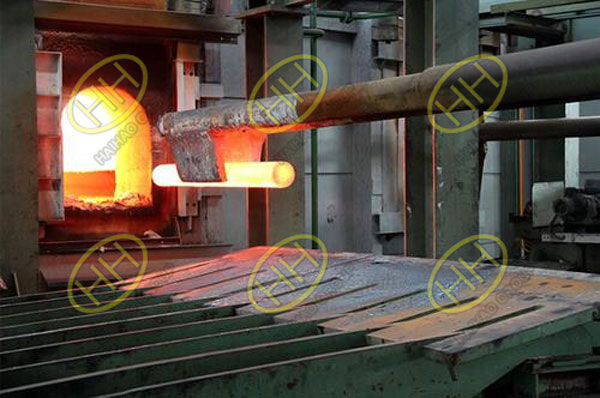Do you know the effect of heat treatment after forging welding? As a professional forging manufacturer, today we will analyze the purpose of the heat treatment.
The purpose of heat treatment is to soften the hardened and brittle structure of the material. An annealed structure with good strength and toughness is formed. The ductility and fracture toughness of the high weld joint material for forgings are increased.
(1) From the structure, the weld seam in the welded forgings and the structure of the heat-affected zone are affected by the welding temperature and cooling rate. Even in low-carbon steel, in addition to ferrite, bainite structure will appear. There are many types, and the total alloy type is relatively high. Generally, the bainite region is enlarged when the austenite is continuously transformed. The starting temperature of martensite transformation is relatively high, and bainite or a mixed structure of martensite and bainite will appear. Forgings of medium carbon steel and high carbon steel will form a quenched structure after welding. Makes the material hard and brittle.

Heat treatment for steel pipes
(2) From the stress state, due to local melting and condensation cooling of the forging welding, a larger stress state is formed, and the peak stress may reach the yield point of the material, and this stress will be reduced
The actual load-bearing capacity of the weld, or the deformation of the formed member, in order to eliminate the uneven stress state of hot and cold, to achieve relaxed welding stress. To stabilize the size and shape of the structure, stress relief annealing should be used to restore the material properties.
(3) Improve corrosion resistance For austenitic stainless steel forging heat treatment products, the welding structure and stress will reduce the corrosion resistance of the material, and the welding area of the forging must be stress-relieved.
(4) To prevent thermal strain aging embrittlement after welding, the reed should be heat treated and annealed.
(5) Dehydrogenation treatment after welding After welding is completed, the weld seam is near 100 ℃, dehydrogenation treatment is mainly to accelerate the escape of hydrogen in the weld seam, especially for low alloy steel forging welding, the processing specification is : (200 ~ 350) ℃ × (2 ~ 6) h.
Several commonly used methods: one is the overall high temperature tempering treatment, and the other is the local high temperature tempering near the welding area or weld. New technologies such as high-speed internal combustion of fuel nozzles for large-scale forging welding knots or spherical tank welding along with on-site overall heat treatment.







